Key Takeaways
1. SRE balances site reliability with innovation velocity
SRE is what happens when you ask a software engineer to design an operations team.
Defining SRE. Site Reliability Engineering (SRE) is Google's approach to service management, focusing on engineering solutions to operational problems. SREs are software engineers who apply software engineering principles to infrastructure and operations challenges. They aim to create scalable and highly reliable software systems.
Balancing act. The core philosophy of SRE is to balance the reliability of services with the need for rapid innovation. This balance is achieved by:
- Setting a target of 50% time spent on operations vs. 50% on development work
- Using error budgets to determine when to push new features vs. when to focus on reliability
- Automating routine operational tasks to free up time for more impactful work
2. Embrace risk to optimize resource allocation and user experience
100% is the wrong reliability target for basically everything.
Risk as a tool. SRE embraces risk as a means to optimize resource allocation and improve user experience. By accepting that some level of failure is inevitable, teams can make more informed decisions about where to invest their efforts.
Practical application. This risk-embracing approach manifests in several ways:
- Setting realistic reliability targets below 100%
- Using error budgets to balance reliability and feature development
- Conducting controlled experiments and gradual rollouts to test system resilience
- Designing systems with failure in mind, ensuring graceful degradation when issues occur
3. Set clear Service Level Objectives (SLOs) to define reliability targets
SLOs are a tool to help determine what engineering work to prioritize.
Defining reliability. Service Level Objectives (SLOs) are specific, measurable targets for system reliability. They provide a clear definition of what "reliable enough" means for a given service.
Components of SLOs:
- Service Level Indicators (SLIs): Metrics that measure specific aspects of service levels (e.g., request latency, error rate)
- Service Level Objectives (SLOs): Target values for SLIs
- Service Level Agreements (SLAs): Commitments made to customers, often with penalties for non-compliance
Importance of SLOs:
- Align engineering efforts with user expectations
- Provide a common language for discussing reliability across teams
- Help prioritize work and make trade-offs between reliability and new features
4. Eliminate toil through automation and engineering solutions
Toil is the kind of work tied to running a production service that tends to be manual, repetitive, automatable, tactical, devoid of enduring value, and that scales linearly as a service grows.
Identifying toil. Toil refers to manual, repetitive work that doesn't provide lasting value. It's important to recognize and eliminate toil to improve efficiency and job satisfaction.
Strategies for eliminating toil:
- Automate routine tasks and processes
- Design systems that are self-healing and require minimal manual intervention
- Implement monitoring and alerting to proactively address issues
- Continuously refactor and improve systems to reduce operational overhead
Benefits of reducing toil:
- Increased time for strategic, high-impact work
- Improved scalability of operations
- Higher job satisfaction and reduced burnout among team members
5. Implement effective monitoring and alerting systems
Monitoring should never require a human to interpret any part of the alerting domain.
Designing monitoring systems. Effective monitoring is crucial for maintaining system reliability. SRE emphasizes the importance of thoughtful, actionable monitoring and alerting.
Key principles of SRE monitoring:
- Focus on symptoms, not causes
- Use the four golden signals: latency, traffic, errors, and saturation
- Implement black-box and white-box monitoring
- Design alerts that are actionable and require human intervention
Alert design considerations:
- Avoid alert fatigue by reducing noise and false positives
- Ensure alerts provide clear, actionable information
- Use tiered alerting systems to differentiate between critical and non-critical issues
6. Practice blameless postmortems to learn from failures
The primary goals of writing a postmortem are to ensure that the incident is documented, that all contributing root cause(s) are well understood, and, especially, that effective preventive actions are put in place to reduce the likelihood and/or impact of recurrence.
Fostering a learning culture. Blameless postmortems are a critical tool for learning from incidents and improving system reliability. They focus on identifying systemic issues rather than individual mistakes.
Key elements of effective postmortems:
- Detailed timeline of the incident
- Root cause analysis
- Impact assessment
- Action items to prevent similar incidents in the future
Benefits of blameless postmortems:
- Encourage open and honest communication about failures
- Identify systemic issues and opportunities for improvement
- Build organizational resilience and knowledge sharing
7. Design for scalability and resilience in distributed systems
A distributed system is one in which the failure of a computer you didn't even know existed can render your own computer unusable.
Challenges of distributed systems. Large-scale systems face unique challenges in terms of scalability, reliability, and complexity. SRE principles help address these challenges through thoughtful system design.
Key design principles:
- Design for failure: Assume components will fail and plan accordingly
- Use redundancy and load balancing to improve resilience
- Implement graceful degradation to maintain partial functionality during failures
- Design systems to be self-healing and require minimal manual intervention
Scalability considerations:
- Use horizontal scaling to handle increased load
- Implement efficient data storage and retrieval mechanisms
- Design systems with loose coupling between components to facilitate independent scaling
8. Balance load effectively across datacenter resources
Load balancing at scale requires breaking away from simplistic solutions like round-robin or least-loaded algorithms.
Load balancing strategies. Effective load balancing is crucial for maintaining system performance and reliability, especially in large-scale distributed systems.
Key load balancing techniques:
- Weighted round-robin: Distributes load based on server capacity
- Least connections: Sends requests to servers with the fewest active connections
- Consistent hashing: Minimizes redistribution when servers are added or removed
- Geographic load balancing: Directs traffic to nearby datacenters to reduce latency
Considerations for load balancing:
- Health checking to avoid sending traffic to unhealthy servers
- Handling connection persistence for stateful applications
- Adapting to changing traffic patterns and server capacities
9. Prepare for and mitigate cascading failures
A cascading failure is a failure that grows over time as a result of positive feedback.
Understanding cascading failures. Cascading failures occur when a failure in one part of a system triggers failures in other parts, potentially leading to widespread outages.
Strategies for preventing and mitigating cascading failures:
- Implement circuit breakers to isolate failing components
- Use rate limiting and load shedding to prevent overload
- Design systems with loose coupling and clear failure domains
- Conduct regular disaster recovery exercises and chaos engineering experiments
Key principles for resilience:
- Fail fast and fail independently
- Implement graceful degradation of services
- Maintain clear visibility into system health and dependencies
- Plan for the unexpected and design systems that can adapt to unforeseen circumstances
Last updated:
FAQ
What's Site Reliability Engineering: How Google Runs Production Systems about?
- Focus on Reliability: The book explores how Google applies Site Reliability Engineering (SRE) principles to ensure that its services are reliable, scalable, and efficient.
- Role of SREs: It describes the role of SREs as engineers who manage large-scale systems, focusing on automating operations to reduce manual toil.
- Cultural Shift: The book documents Google's transformation in operations by integrating software engineering into service management, influencing the broader IT community.
Why should I read Site Reliability Engineering: How Google Runs Production Systems?
- Valuable Insights: The book offers firsthand accounts and lessons from Google’s SRE teams, providing practical advice for improving system reliability.
- Comprehensive Framework: It outlines a framework for implementing SRE practices, making it a valuable resource for both new and experienced engineers.
- Cultural and Technical Guidance: The book covers both technical aspects and the cultural changes necessary for successful SRE implementation, relevant for leaders and managers.
What are the key takeaways of Site Reliability Engineering: How Google Runs Production Systems?
- Error Budgets: The concept of error budgets helps balance reliability with rapid feature development, managing risk while encouraging innovation.
- Eliminating Toil: Reducing manual, repetitive work allows SREs to focus on engineering projects that add long-term value, maintaining a sustainable work environment.
- Monitoring and Incident Management: Effective monitoring and incident response strategies are essential for maintaining service reliability, with detailed guidance provided.
What are the best quotes from Site Reliability Engineering: How Google Runs Production Systems and what do they mean?
- "Hope is not a strategy.": Emphasizes the need for concrete plans and processes in managing systems, rather than relying on optimism.
- "If a human operator needs to touch your system during normal operations, you have a bug.": Highlights the goal of automation, aiming to minimize human intervention in routine tasks.
- "The price of reliability is the pursuit of the utmost simplicity.": Advocates for minimizing complexity in design and implementation to enhance stability.
What is the role of SREs as described in Site Reliability Engineering: How Google Runs Production Systems?
- Engineering Focus: SREs are software engineers who apply their skills to operations, ensuring services are reliable and efficient.
- Collaboration with Development Teams: They work closely with product development teams to ensure new features are released without compromising reliability.
- On-Call Responsibilities: SREs participate in on-call rotations to respond to incidents, maintaining a connection to the systems they manage.
How does Site Reliability Engineering: How Google Runs Production Systems define reliability?
- Reliability Definition: Reliability is defined as the probability that a system will perform a required function without failure under stated conditions for a stated period.
- Service Level Objectives (SLOs): SREs use SLOs to quantify reliability targets, guiding decision-making and prioritization in service management.
- Balancing Reliability and Innovation: The book discusses balancing reliability with rapid innovation, using error budgets to manage this trade-off.
What is the significance of error budgets in Site Reliability Engineering: How Google Runs Production Systems?
- Error Budget Concept: An error budget is the allowable threshold of unreliability for a service, calculated as one minus the service level objective (SLO).
- Encouraging Innovation: By allowing teams to "spend" their error budget on new features, SRE promotes a culture of experimentation and innovation.
- Managing Risk: Error budgets help teams make informed decisions about when to prioritize reliability improvements versus feature development.
What practices are recommended for monitoring in Site Reliability Engineering: How Google Runs Production Systems?
- Four Golden Signals: The book identifies latency, traffic, errors, and saturation as key metrics to monitor for user-facing services.
- Alerting Strategies: Effective alerting should focus on actionable alerts that indicate real problems affecting users, minimizing noise to prevent alert fatigue.
- Continuous Improvement: Monitoring systems should evolve over time, incorporating feedback and lessons learned from incidents.
How does Site Reliability Engineering: How Google Runs Production Systems address incident management?
- Structured Incident Response: The book outlines a structured approach to incident management, emphasizing clear procedures and communication during incidents.
- Postmortem Culture: SRE promotes a blameless postmortem culture, encouraging teams to learn from incidents without assigning blame.
- Role of On-Call Engineers: On-call engineers play a critical role in incident management, responding to alerts and coordinating responses.
What is the relationship between SRE and DevOps as discussed in Site Reliability Engineering: How Google Runs Production Systems?
- SRE as Implementation of DevOps: SRE can be viewed as a specific implementation of DevOps principles, focusing on reliability as a primary goal.
- Shared Goals: Both SRE and DevOps seek to enhance the speed and quality of software delivery while maintaining system reliability.
- Cultural Differences: While SRE and DevOps share many principles, they may differ in cultural approaches and specific practices.
What is the Incident Command System mentioned in Site Reliability Engineering: How Google Runs Production Systems?
- Structured Response: The Incident Command System (ICS) is a standardized approach to incident management, providing a clear structure for roles and responsibilities.
- Scalability: ICS is designed to be scalable, allowing organizations to adapt their response based on the size and complexity of the incident.
- Effective Communication: It facilitates better communication among team members, ensuring everyone knows their role and can work together efficiently.
How does Google handle postmortems according to Site Reliability Engineering: How Google Runs Production Systems?
- Blameless Approach: Google emphasizes a blameless postmortem culture, focusing on understanding what went wrong and how to prevent it in the future.
- Action Items: Postmortems include actionable items to address the root causes of incidents, ensuring lessons learned are implemented.
- Documentation: Postmortems are documented and shared across teams, allowing others to learn from past incidents and avoid similar mistakes.
Review Summary
Site Reliability Engineering receives mixed reviews, with many praising its valuable insights into Google's practices but criticizing its uneven quality and repetitiveness. Readers appreciate the book's coverage of SRE principles, error budgets, and operational practices. However, some find it too Google-specific and challenging to apply to smaller organizations. The book's structure as a collection of essays leads to inconsistency, with some chapters being highly informative while others are less engaging. Despite its flaws, many consider it an essential read for those interested in large-scale system reliability and DevOps.
Similar Books


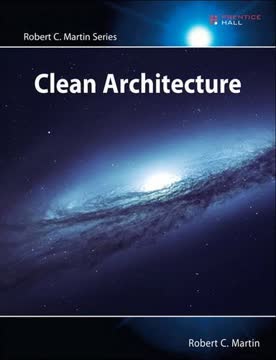
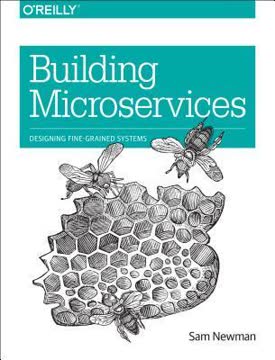
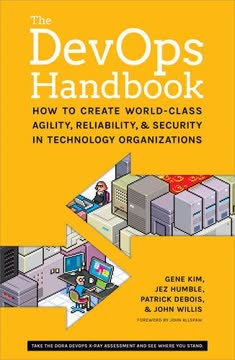
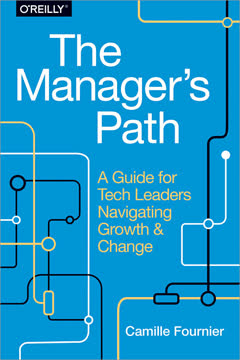
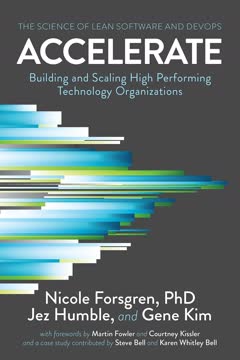

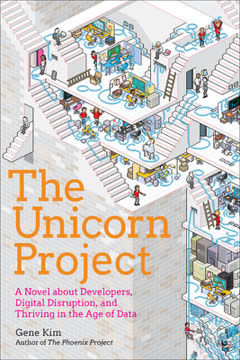
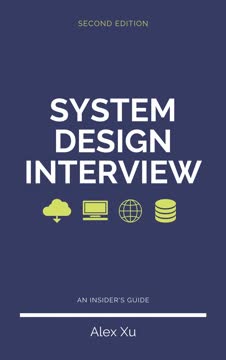
Download PDF
Download EPUB
.epub digital book format is ideal for reading ebooks on phones, tablets, and e-readers.






